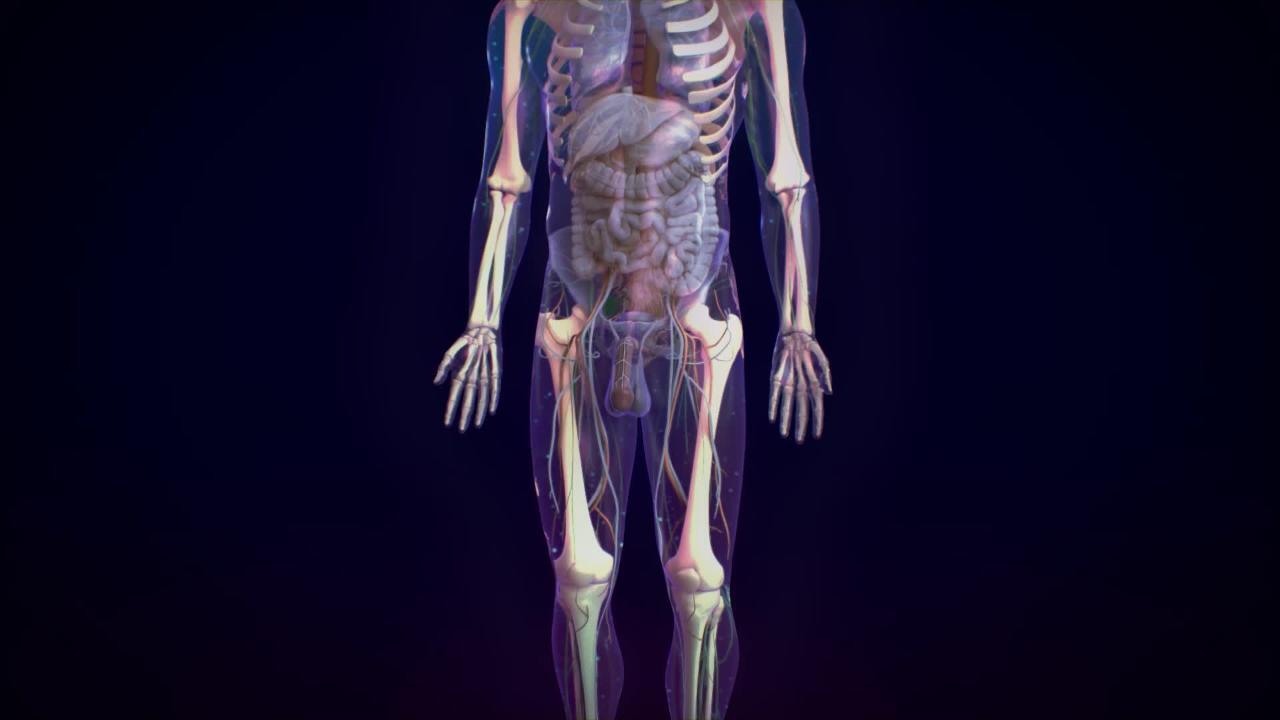Nyenzo za Mada
Various abnormalities can affect the skin of the penis. Some are bodywide skin disorders that affect the penis as well as other parts of the skin. Examples include psoriasis, lichen planus, and seborrheic dermatitis. Some affect only the penis or affect the penis before they affect other areas. The skin of the penis can also be affected by cancer.
Maambukizi ya uume
Growths on the penis are sometimes caused by infections, especially sexually transmitted infections. One example is syphilis, which may cause flat pink or gray growths (condylomata lata). Also, certain viral infections can cause one or more small, firm, raised skin growths (genital warts, or condylomata acuminata) or small, firm, dimpled growths (molluscum contagiosum). Scabies can cause small, itchy bumps.
Lichen planus ya uume
Lichen planus can cause small flat or raised spots on the head or shaft of the penis. They often itch. Occasionally, painful sores develop on the penis and in the gums (called penogingival syndrome). Lichen planus usually resolves on its own. No treatment is required unless itching is bothersome. Corticosteroid creams can relieve itching.
Uvimbe mdogo kwenye ngozi ya uume wenye umbo la lulu
Pearly penile papules are abnormal growths originating in the blood vessels of the penis. They appear as small, usually skin-colored growths shaped like domes or hairs on the shaft of the penis. They are harmless and common, occurring in as many as 10% of men. No treatment is required.
Balanitis xerotica obliterans
Balanitis xerotica obliterans (also called lichen sclerosus et atrophicus) occurs when long-term (chronic) inflammation causes the skin near the tip of the penis to harden and turn white. The opening of the urethra is often surrounded by this hard white tissue, which eventually blocks the flow of urine and semen. Antibacterial, corticosteroid, or anti-inflammatory creams may relieve the inflammation, but if the urethra must be reopened, it is done surgically.
© Springer Science+Business Media
Ugonjwa wa ngozi unaosababishwa na kupitia kugusana wa uume
Contact dermatitis is often caused by use of a latex condom in a man who is allergic to latex. Usually red, itchy spots appear. Sometimes the skin is broken or fluid leaks from around the spots. Affected men should instead use a synthetic nonlatex condom. Natural condoms do not protect adequately against human immunodeficiency virus infection. If necessary, symptoms can be relieved by a corticosteroid cream, such as 1% hydrocortisone cream (available over the counter).
Saratani za ngozi za ndani (in situ) ya uume
Local skin cancers of the penis can include
Erythroplasia of Queyrat
Bowen disease of the penis
Bowenoid papulosis
Adenocarcinoma
Erythroplasia of Queyrat and Bowen disease of the penis are well-defined areas of reddish, velvety pigmentation on the glans (erythroplasia of Queyrat) or white-gray, thickened areas on the shaft (Bowen disease), primarily in uncircumcised men. Erythroplasia of Queyrat is a squamous cell carcinoma in situ (superficial skin cancer) of the glans penis or foreskin; Bowen disease of the penis is squamous cell carcinoma in situ of the skin on the penile shaft.
Bowenoid papulosis involves smaller, often multiple, bumps (papules) on the shaft of the penis. It frequently develops in people infected with human papillomavirus.
Paget disease of the nipple (not to be confused with Paget disease of bone) is a rare cancer that can occur in locations other than the breasts, including the penis.
Doctors remove a sample of tissue for examination (biopsy) to determine the type of cancer and to make sure the cancer has not spread beyond the skin.
Fluorouracil cream, a surgical procedure, or laser therapy may be used to remove the cancer. Affected men should be regularly monitored for recurrence or spread because these lesions can become more invasive cancers.



